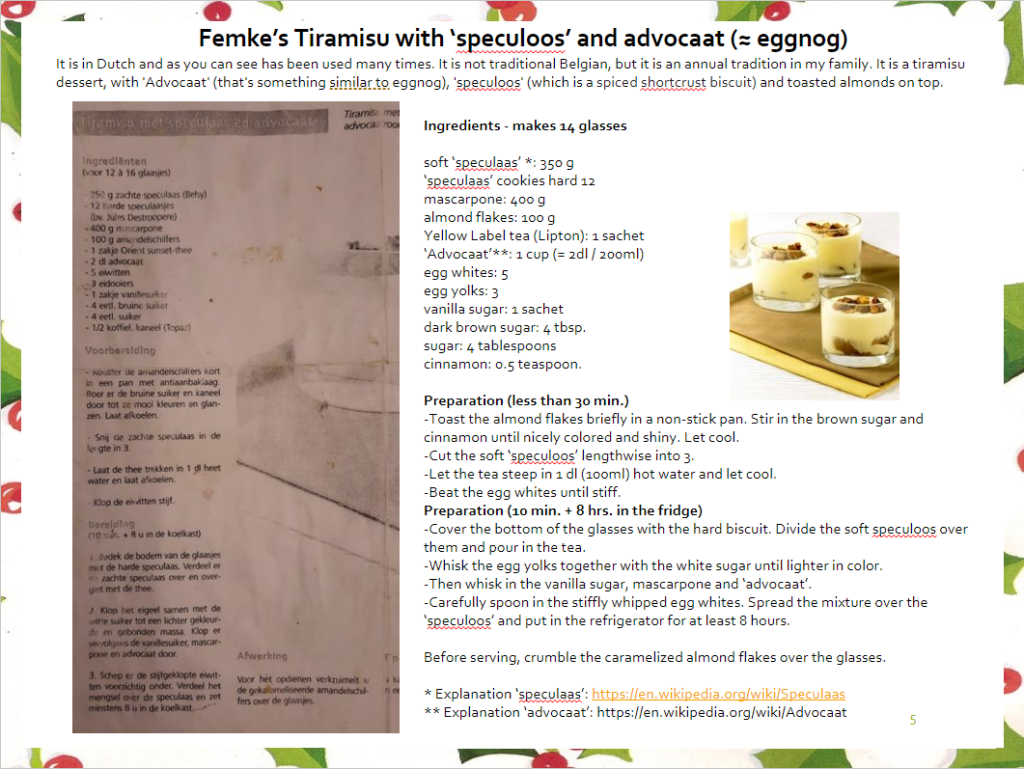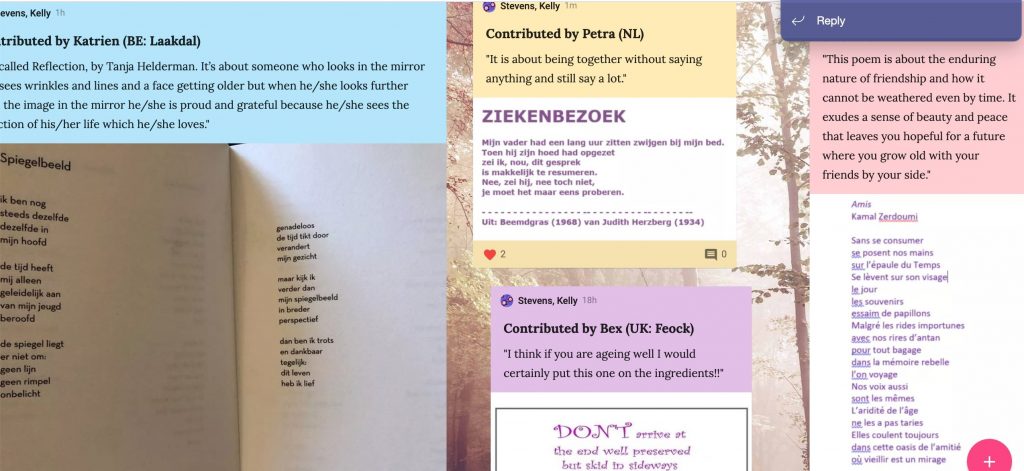In early November, SIG‘s HAIRE team were delighted to welcome our Belgian partners Sofie Schepers and Katrien Serroyen who were visiting Cornwall from Laakdal. After a weekend of cultural and historical activities – taking in Guy Fawkes’ night and a tour of Falmouth’s Tudor castle, Pendennis – they spent a day exchanging experiences with Feock (one of our pilot sites) before travelling to East Sussex pilot sites and meeting our partners at Rother Voluntary Action and East Sussex County Council.
The East Sussex team were keen to give as broad a picture as possible of their locality and took our Belgian colleagues on a tour that took in the quaint beauty of Rye (cobbled streets and the fifteenth century Mermaid Inn), Tilling Green social housing estate, new housing in Winchelsea, and a relatively new community hub – The Hub on the Hill – which runs many classes and services for the community with an emphasis on older residents.
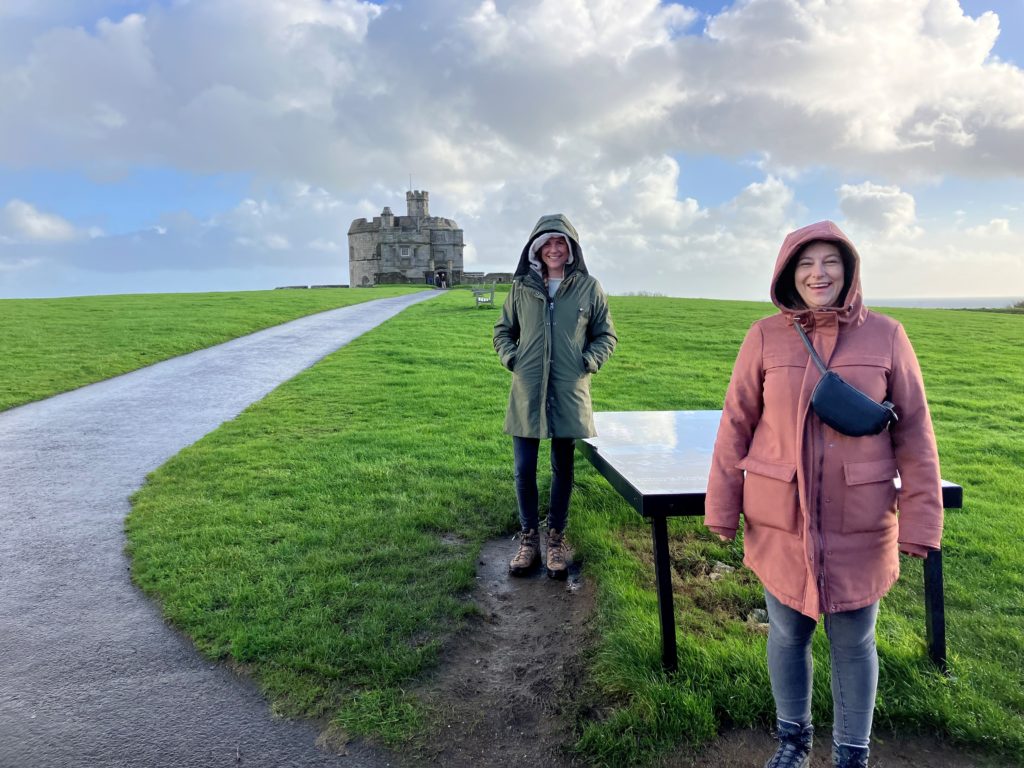
Katrien and Sofie at Pendennis Castle, Falmouth, Cornwall
The cultural exhange and sharing is important for Interreg2Seas funded projects. They promote cooperation between regions and countries to enhance economic and social development in our own countries and across borders. Our HAIRE 2Seas partners share the common challenge of supporting people to age well in rural areas, where loneliness and isolation and mobility problems are just some of the themes being tackled. Having had very few opportunities to meet due to restrictions brought about by the Covid pandemic, it was inspiring to share experiences and perspectives from nearly three years of HAIRE action and learning in our respective locations.
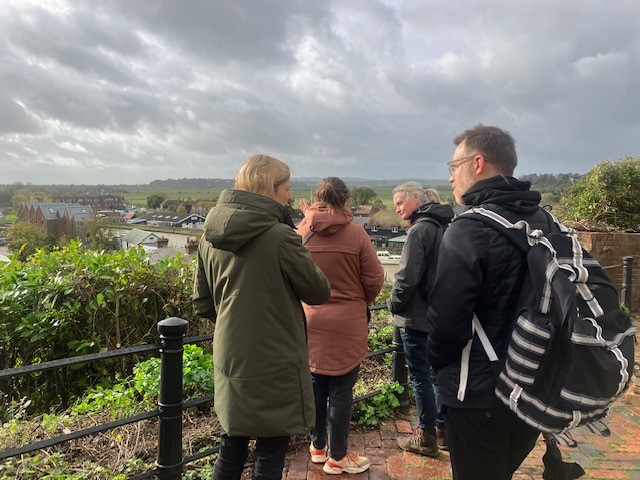
Steve, Sue and Naomi from East Sussex taking the Belgians on a tour of their locality
At the initial meeting in Devoran, the village in Feock parish where the council offices are located, the difference between locations felt quite stark to our Belgian colleagues: Laakdal is a municipality with a population of around 16,000, whereas the population in Feock Parish numbers around 3,700. The larger East Sussex pilot sites felt more familar to the Belgian team. Yet one of the most difficult challenges for all locations has been reaching members of the community who may be in need, or may benefit from HAIRE’s activities, but who are almost “hidden.”
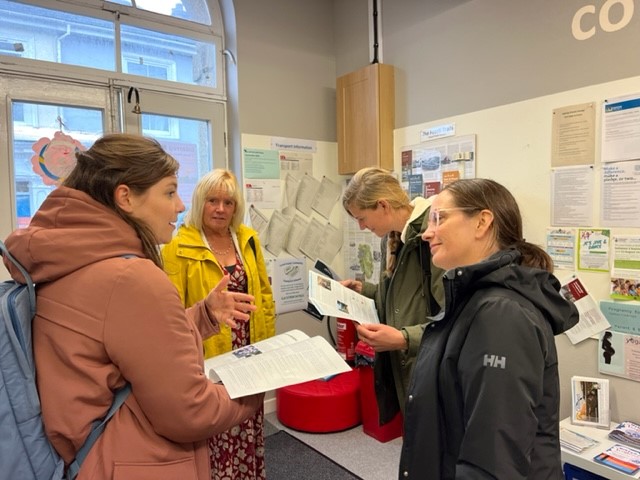
The extended HAIRE team pictured in a community space at Feock parish council
However, as a result of the emphasis the HAIRE toolkit placed on listening to residents, the needs of the older population as a whole can be better taken into account. Now that HAIRE and its ethos of co-creation and listening is familiar to each department and area of responsibility, the views, opinions, needs and ideas of residents are being heard, and this has led to subtle changes in the system. Different methods to listen and co-create products and services have been introduced in all of our pilot sites to ensure their older residents are included in important decisions.
Feock now has an information and help line, originating out of the Covid pandemic, but which has become a staple of the parish. A legacy of HAIRE is that parish-based decisions take into account any impact on the older population in a way that they may not have been so obviously before. It is the same in Laakdal: the planning department, for example, is aware of the way its decisions impact the elderly – and they are now prepared to consult the HAIRE team for information about how they might best move forward with their works.
East Sussex partners have done an excellent job by instigating local and national design innovations after working with the RSA, the royal society for arts, manufactures and commerce (“committed to a world that is resilient, rebalanced and regenerative, where everyone can fulfil their potential.”) Their Hastings and Rother Ageing Network meets monthly to network with local organisations, groups and individuals with a focus on how they can work together to make Rother and Hastings healthy and supportive places to grow older in.
From a longer term, strategic standpoint, Feock has made the decision to work with partners to develop a formal age-friendly community as our partners in East Sussex have done. The Guided Conversations in pilot sites illustrated the multiple dimensions of ageing well, which prompted the need for a holistic system response, and the UK arm of the World Health Organisation’s Age Friendly Communities programme is well aligned with the aims of the HAIRE project.
As Katrien and Sofie pointed out, the pilot site comparisons were useful, showing commonalities and differences and making them reflect on what went well in their own communities – and how “HAIRE thinking” could be built into longer term planning.
“Feock felt very isolated in comparison to Laakdal. The lack of public transport, the lack of shops, the very rural environment, the huge amount of second homes … I would think that building the community would be very difficult. Yet they succeed to organise meetings where 80 people attend and they make the most of small things (the red phone booths made into small libraries). Well done Feock! Rye felt more like Laakdal. What stood out was that both pilot sites are much more in contact with the church. In Belgium the church doesn’t organise much and in our pilot site the church isn’t involved. What was also different is the health part. I think that in the UK the health partners and health “input” is bigger than in Belgium. In Laakdal it’s more community building and well being than health. What I think both pilot sites did very well is thinking about life after HAIRE right from the beginning of the project. I believe that that will make it possible to continue and embed HAIRE better.”
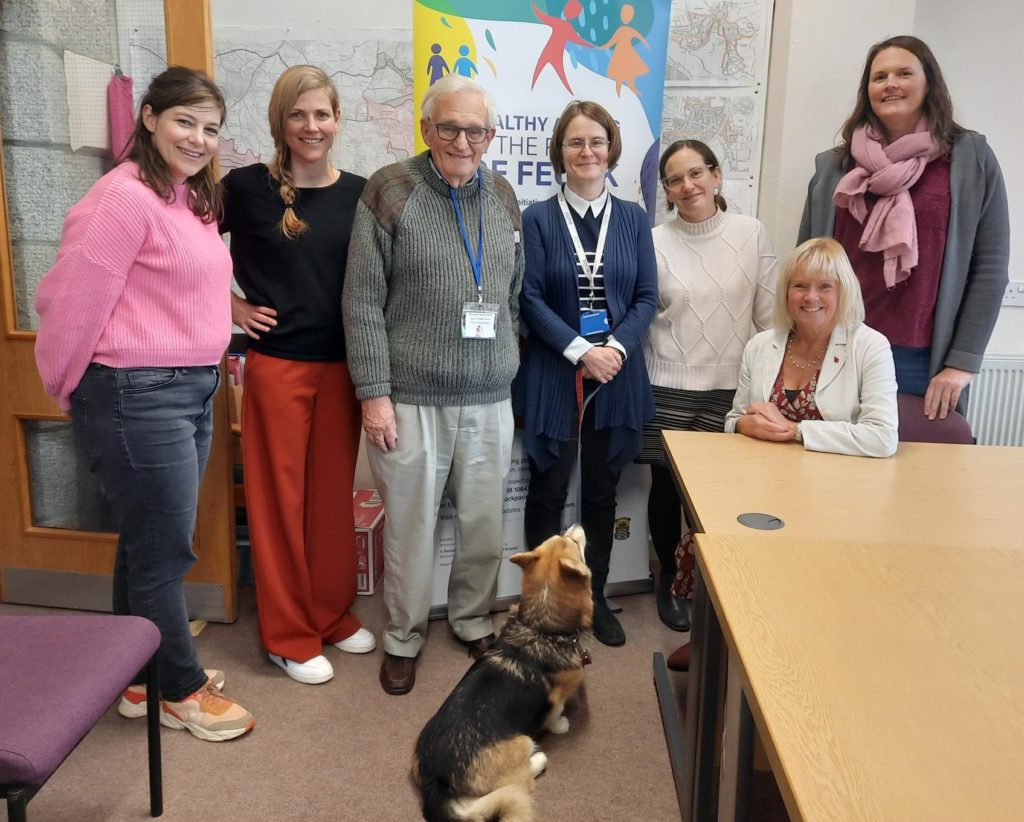
The Belgian team with Feock and the University of Exeter – and the HAIRE mascot, Treacle
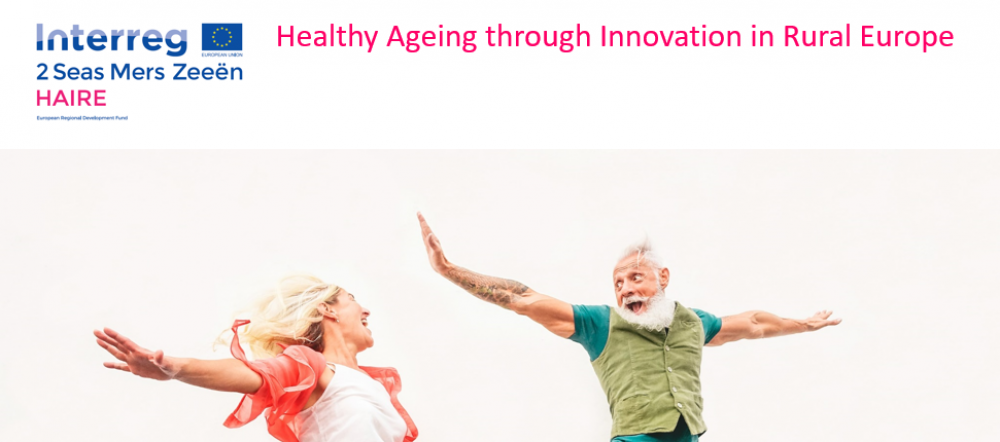

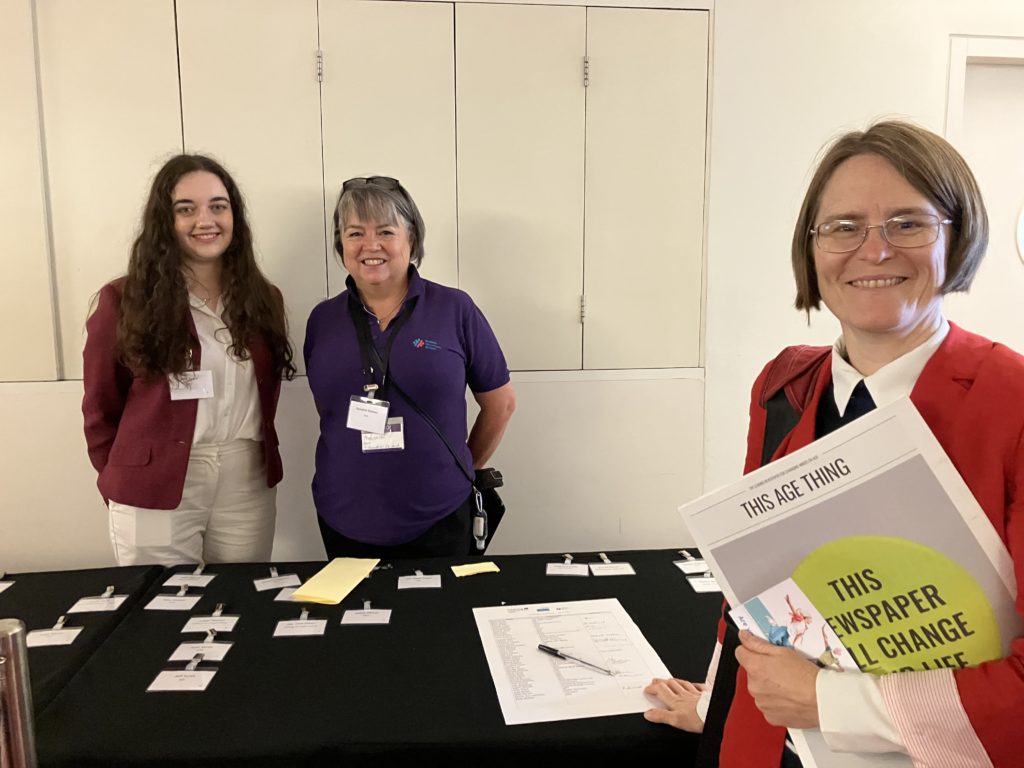
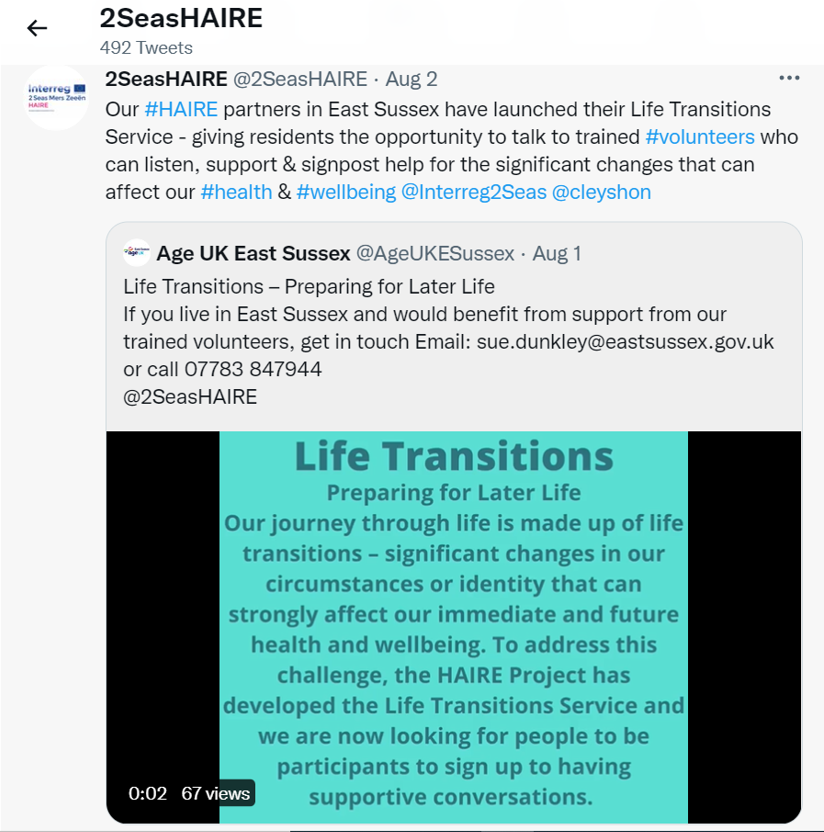

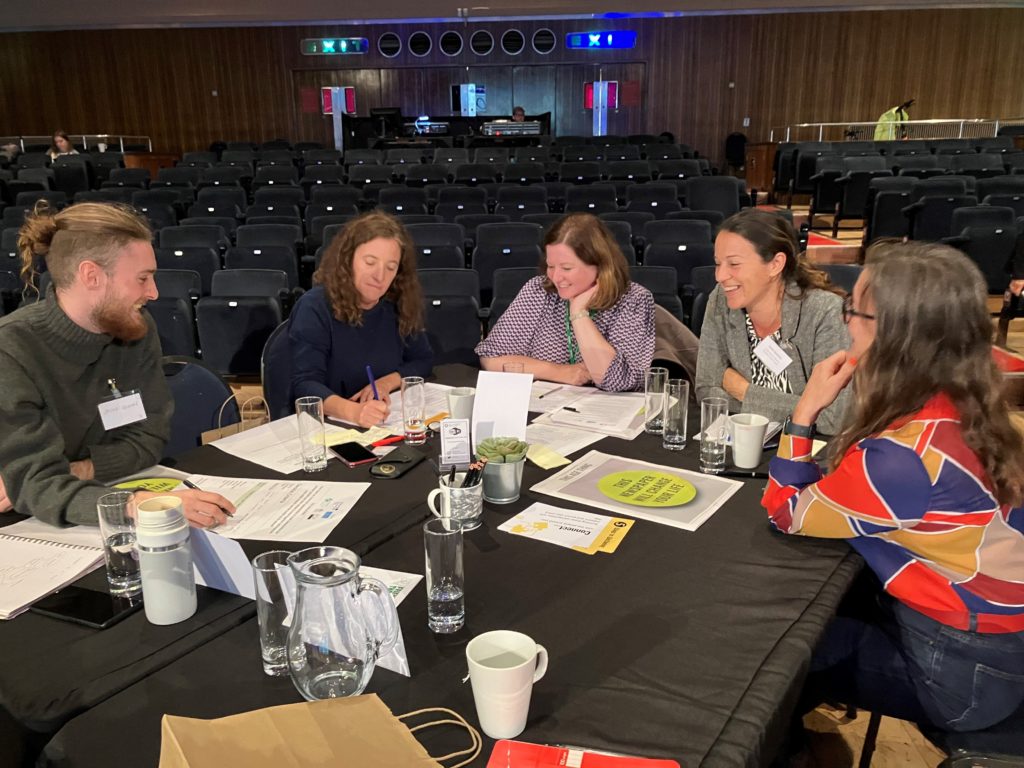
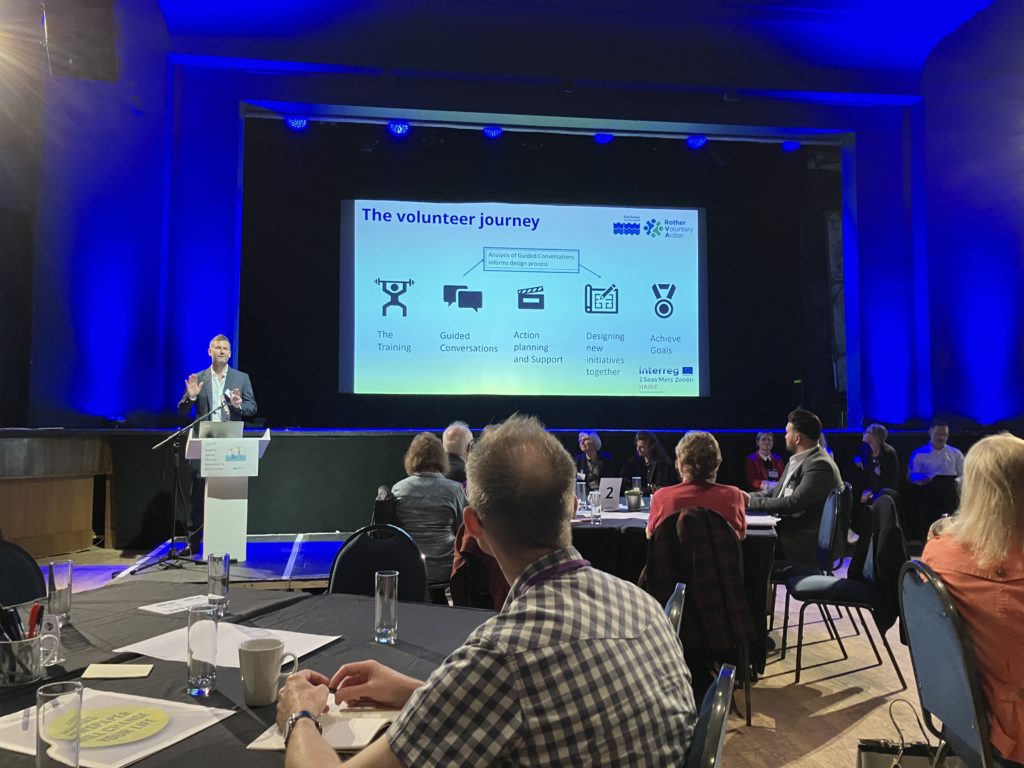

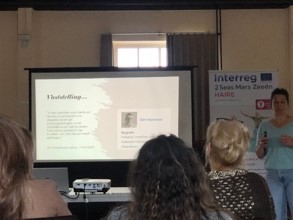
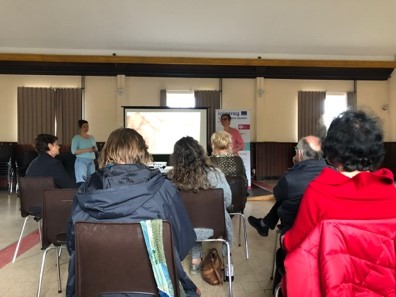
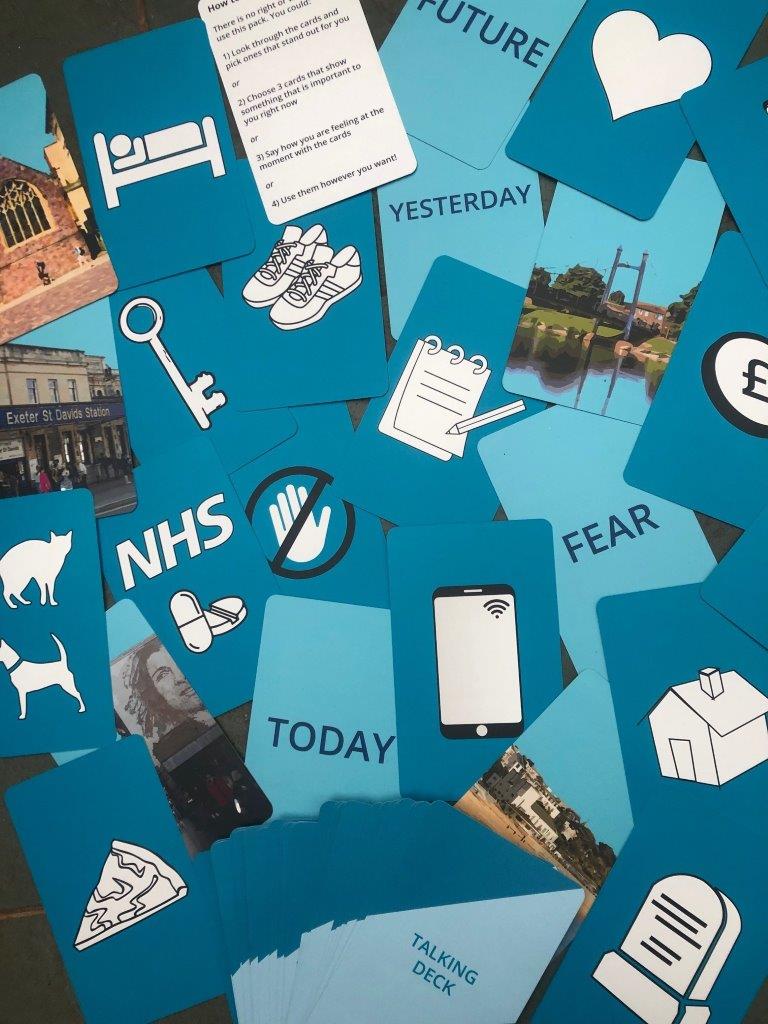
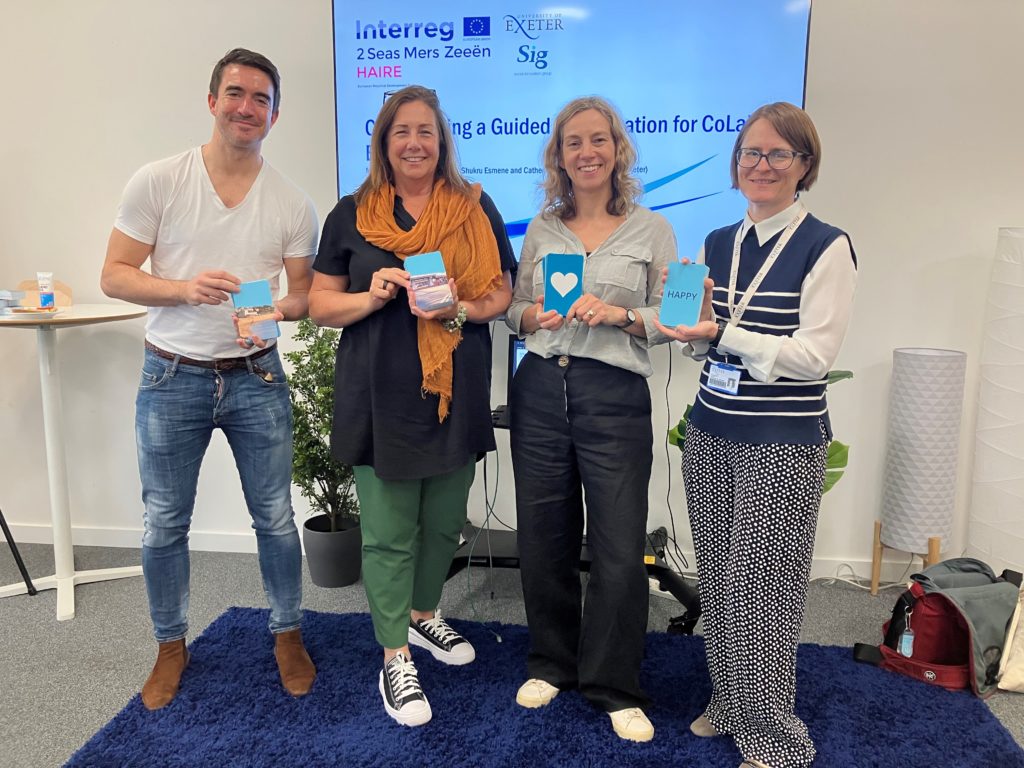
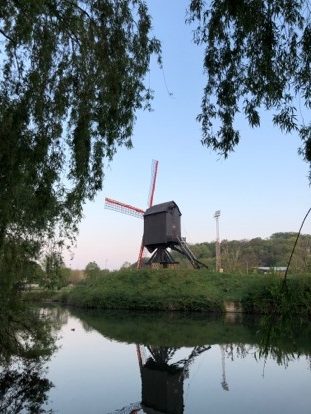
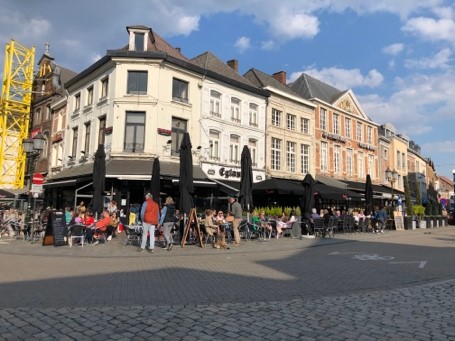
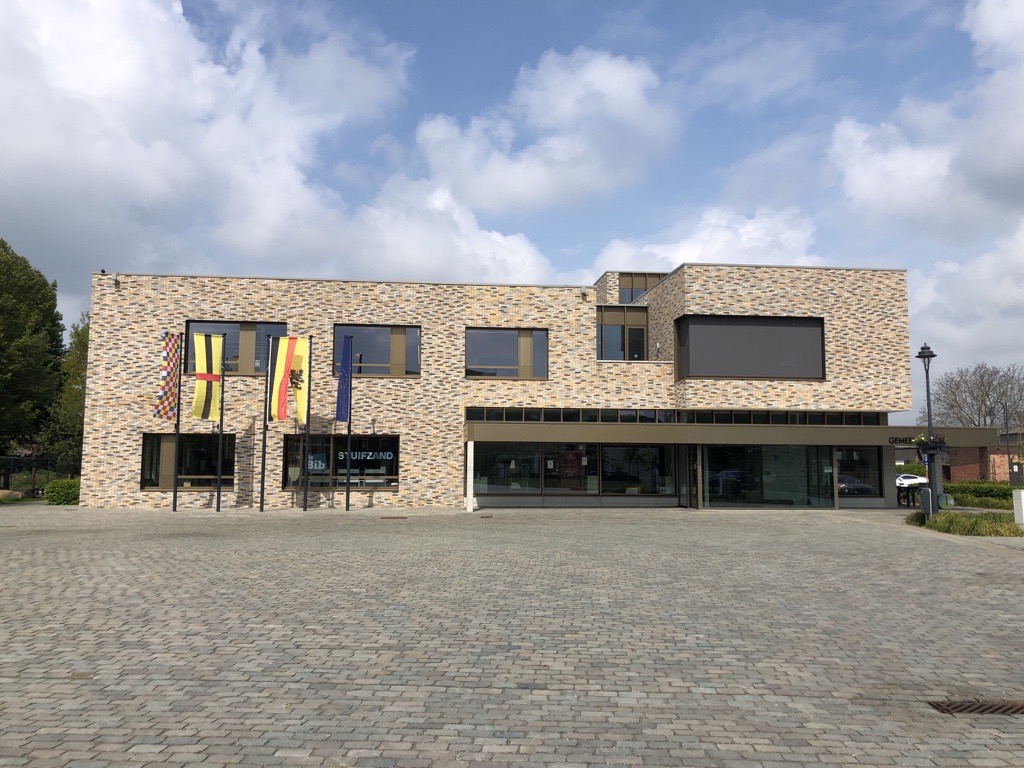 I meet four volunteers who have some fascinating insights into their experience of using the HAIRE toolkit. They are very generous with their knowledge, and – with a retired Alderman amongst their number – we have an in-depth discussion about new models of service design and delivery. The issues in this part of rural Belgium are familiar across the project: people growing older sometimes become less confident and stop going out as much. They become isolated and suffer some consequences to their overall wellbeing. The Guided Conversation has helped to reconnect them to the community. The partners are especially looking forward to taking ownership of a new minibus; transport here is very limited – it’s no surprise that getting around is a problem in all our pilot sites.
I meet four volunteers who have some fascinating insights into their experience of using the HAIRE toolkit. They are very generous with their knowledge, and – with a retired Alderman amongst their number – we have an in-depth discussion about new models of service design and delivery. The issues in this part of rural Belgium are familiar across the project: people growing older sometimes become less confident and stop going out as much. They become isolated and suffer some consequences to their overall wellbeing. The Guided Conversation has helped to reconnect them to the community. The partners are especially looking forward to taking ownership of a new minibus; transport here is very limited – it’s no surprise that getting around is a problem in all our pilot sites.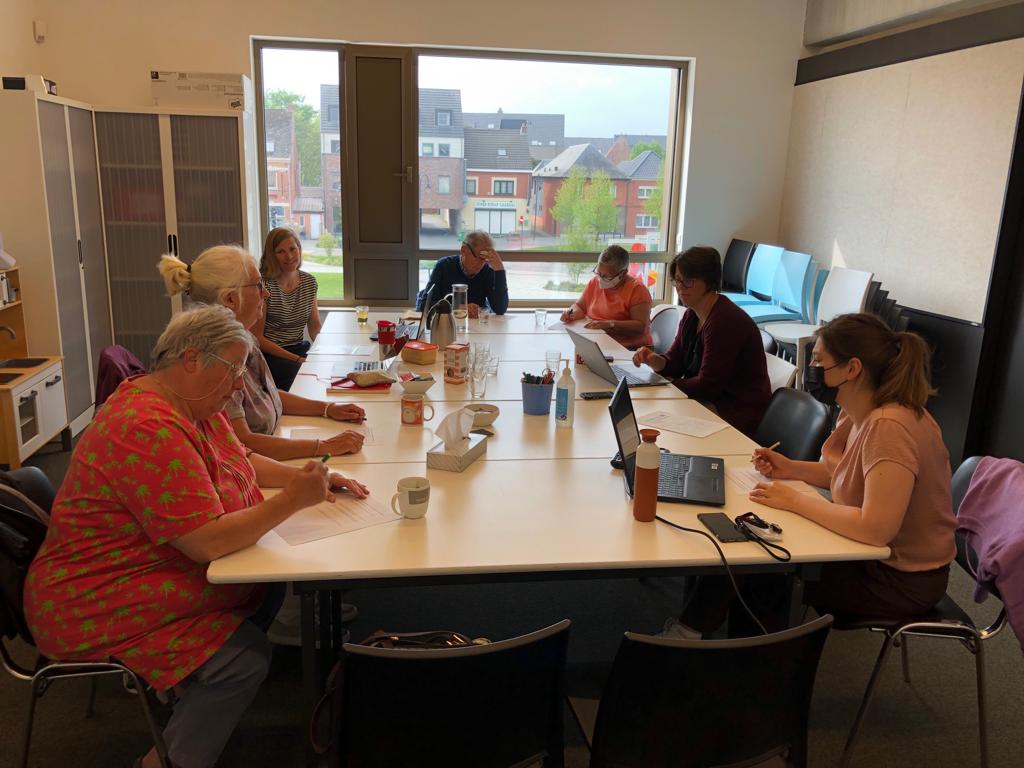

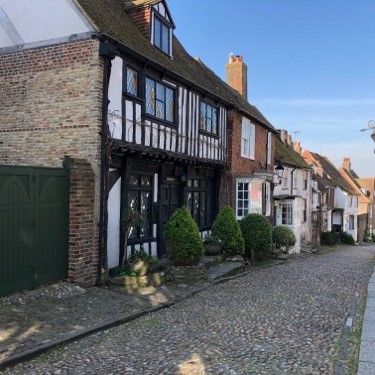
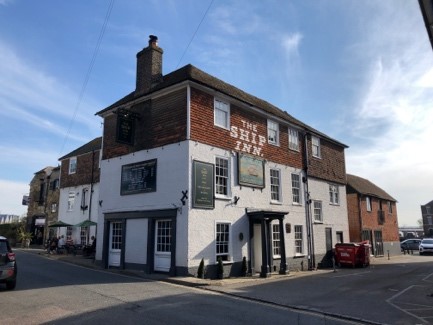 I turn off the delightfully named Wish Street onto Wish Ward in the direction of a disused factory, a piece of industrial heritage referencing the area’s past. A former bakery, it now houses a pottery. I walk past picturesque redbrick and half shingle houses. The pretty townhouse along a cobbled street with a new Jaguar parked outside tells a story that I’m only too familiar with from Cornwall where the picturesque rural setting can hide great disparities in wealth. Mermaid Street, with its ancient, rounded cobbles, opens up to my left. The Ship Inn – my destination after 7 hours traveling from Cornwall, sits in an attractive riverside location. After dumping my bags, I go for a run along a levee between the river and a nature reserve. It’s a lovely part of the world – startlingly flat compared to Cornwall.
I turn off the delightfully named Wish Street onto Wish Ward in the direction of a disused factory, a piece of industrial heritage referencing the area’s past. A former bakery, it now houses a pottery. I walk past picturesque redbrick and half shingle houses. The pretty townhouse along a cobbled street with a new Jaguar parked outside tells a story that I’m only too familiar with from Cornwall where the picturesque rural setting can hide great disparities in wealth. Mermaid Street, with its ancient, rounded cobbles, opens up to my left. The Ship Inn – my destination after 7 hours traveling from Cornwall, sits in an attractive riverside location. After dumping my bags, I go for a run along a levee between the river and a nature reserve. It’s a lovely part of the world – startlingly flat compared to Cornwall.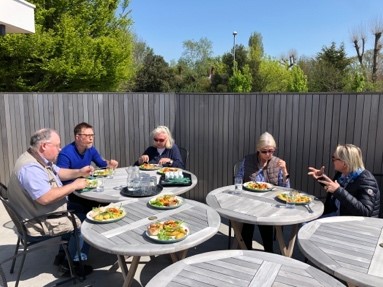
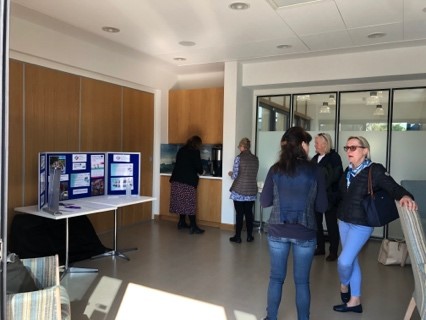 We have a great meeting, discussing the volunteer experience of using the HAIRE toolkit – especially the Guided Conversation – and the legacy of HAIRE which will be felt through the pilot projects in Age Friendly Rother, now officially a part of the World Health Organisation’s Age Friendly Community programme.
We have a great meeting, discussing the volunteer experience of using the HAIRE toolkit – especially the Guided Conversation – and the legacy of HAIRE which will be felt through the pilot projects in Age Friendly Rother, now officially a part of the World Health Organisation’s Age Friendly Community programme.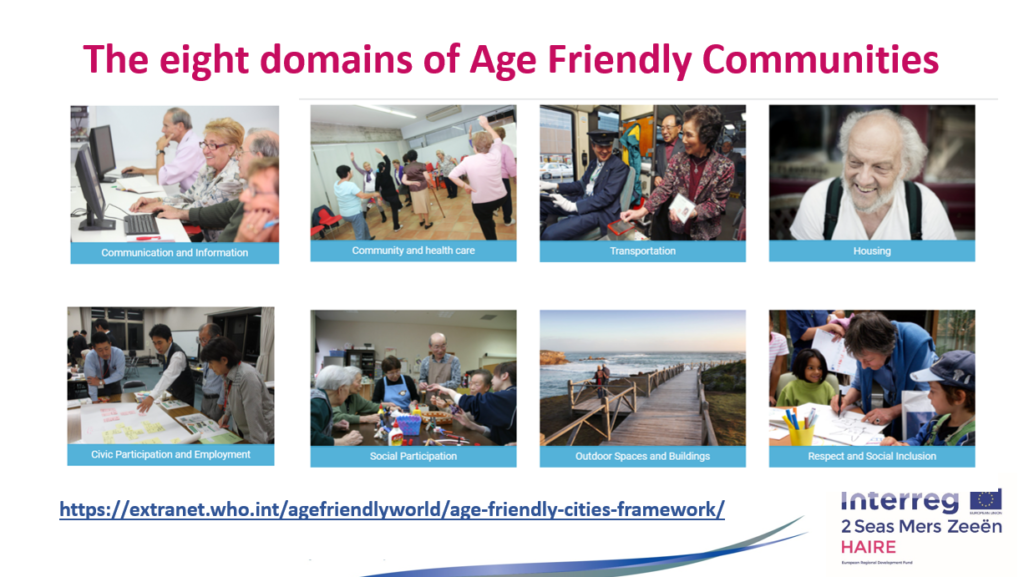
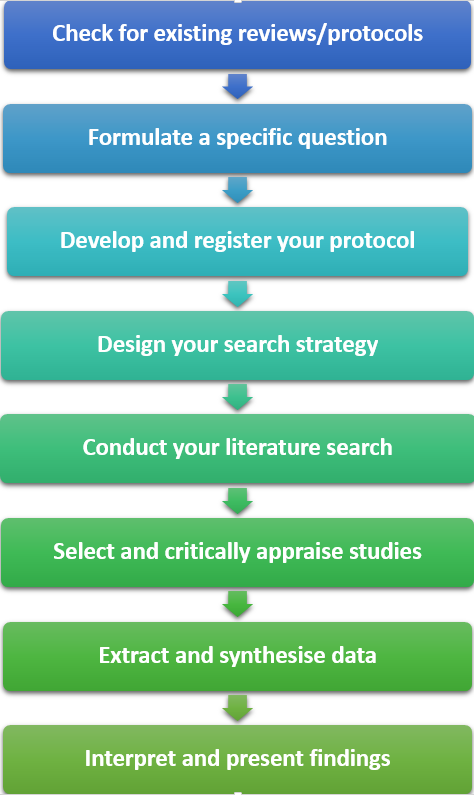
 Season’s Greetings! After nearly two years of working together throughout the Covid pandemic, the team has still not managed to meet up in person since the project launch in early 2020. At the end of 2021, plans for our first face to face gathering were once again thwarted by the emergence of Omicron, but we are still finding ways to connect with each other on a personal level despite everything. To celebrate the season, the HAIRE team got together virtually to share their favourite family recipes from each of our four countries: the UK, France, Belgium and the Netherlands. Such was the response we decided to make our own HAIRE recipe book, featuring tasty dips and snacks, desserts and treats from across the 2Seas region. Below are a few highlights …bon appetit!
Season’s Greetings! After nearly two years of working together throughout the Covid pandemic, the team has still not managed to meet up in person since the project launch in early 2020. At the end of 2021, plans for our first face to face gathering were once again thwarted by the emergence of Omicron, but we are still finding ways to connect with each other on a personal level despite everything. To celebrate the season, the HAIRE team got together virtually to share their favourite family recipes from each of our four countries: the UK, France, Belgium and the Netherlands. Such was the response we decided to make our own HAIRE recipe book, featuring tasty dips and snacks, desserts and treats from across the 2Seas region. Below are a few highlights …bon appetit!

